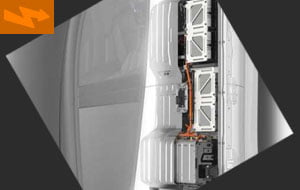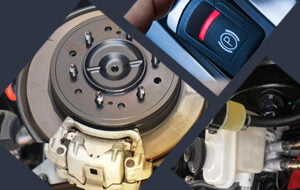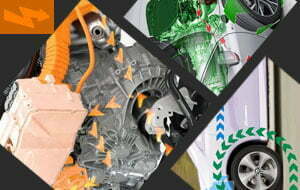Thermal Management in Hybrid & Electric Vehicles
Course Details
The high-voltage systems of electric vehicles do not need a large amount of cooling in comparison with an internal combustion engine. Nevertheless, they do need cooling in order to function correctly and prevent faults in the internal electronic and electrical components. The high-voltage cooling is divided into two groups: the powertrain and the high-voltage battery, the latter being the most delicate element. As regards cooling systems, there are passive and active types and the method used can be forced air, conditioned air and or by means of coolant.
The main aims of this course are:
- To identify the different types of circuits and elements that make up the vehicle’s climate control.
- To recognise the importance of the characteristics of the different types of refrigerants.
- To establish the system’s maintenance processes.
- To make use of the climate control verification and adjustment equipment and tools.
- To understand the need for cooling.
- To understand the operating principles of cooling in high-voltage systems.
- To classify the circuits and elements that form part of the cooling system.
- To analyse the thermal management of the high-voltage components.
- To differentiate between the passive and active cooling and heating systems.
- To carry out assembly and maintenance operations on the cooling system.
- To verify and adjust the cooling systems.
Course Topics
1.- Heating and air-conditioning system
1.1.- Operating principles of the cabin’s climate control
1.2.- Circuits and elements that form the climate control system
1.3.- Refrigerant
1.4.- High-voltage compressor
1.5.- Solenoid valves (heat pump)
1.6.- Test of knowledge
2.- Maintenance operations in the climate control system
2.1.- Measuring and control equipment
2.2.- Establishment of assembly and maintenance processes
2.3.- Verification and adjustment of the systems
2.4.- Test of knowledge
3.- Cooling of the high-voltage system
3.1.- Need for cooling
3.2.- Operating principles of cooling in high-voltage systems
3.3.- Cooling circuits and elements in the high-voltage system
3.4.- Thermal management of the high-voltage components
3.5.- Air cooling and heating
3.6.- Liquid cooling and heating
3.7.- Direct cooling with refrigerant and heating by PTC
3.8.- Test of knowledge
4.- Maintenance and operations in the cooling system
4.1.- Establishment of assembly and maintenance processes
4.2.- Verification and adjustment of the systems
4.3.- Test of knowledge
5.- Self-assessment
5.1.- Self-assessment

| Avg. Duration | 4h |
|---|---|
| Type | Self Study |
| Category |


